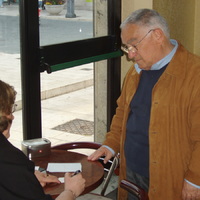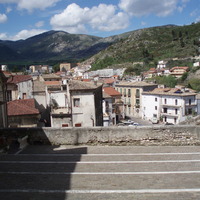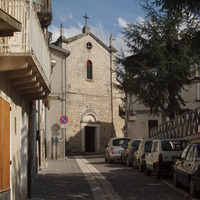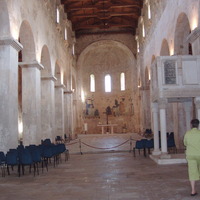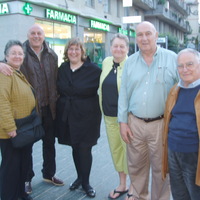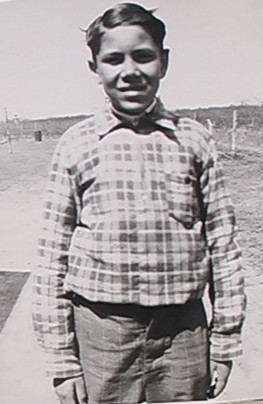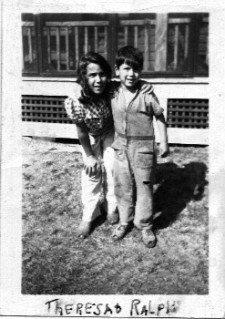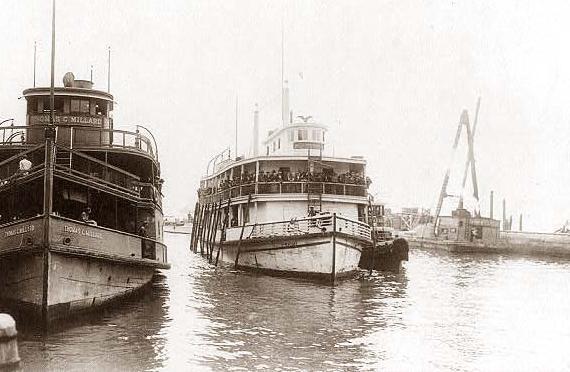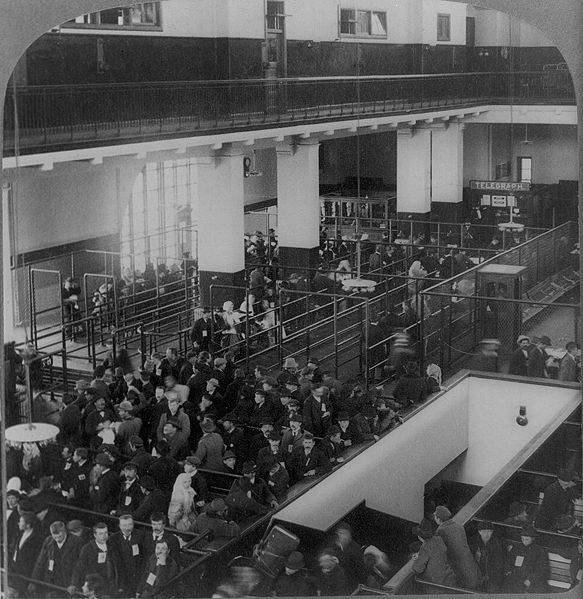Aunt Ceil, Cousin Nic from the Bronx and Uncle Harry
 Saturday, April 10, 2010 at 6:05PM
Saturday, April 10, 2010 at 6:05PM As most of you know, my Aunt Ceil passed away on February 28th after a long battle with cancer.
Ceil was my father's oldest sister. She was born on September 2, 1930 in Greenport, Long Island and spent her entire life on the "East End". Ceil married Henry Stepnoski on June 14, 1949 in St Agnes Roman Catholic Church in Greenport and they subsequently had four children together: Corinne, Josephine, John and Angelo. Ceil did an amazing job raising her kids and her kids, in turn, did an amazing job caring for her at the end of her life.
After her funeral, I went to Ceil's apartment for the very last time. (From the time I was a child, Ceil and Henry lived in that apartment.) While there, my cousins generously let me go through her old photos, which are now part of my genealogy treasure chest. But truth be told, my most enduring memory of my aunt will be our long talks about our family. Ceil was, and will always be, my genealogy buddy.
Ceil taught me alot about my family, and in the course of our conversations, I learned alot about her. At times she could be grumbly and inpatient, but under the chutzpah was a real mensch.
Ceil had vivid memories of my great grandmother, Condelia, and always talked about her with great affection. Ceil shared with me that my great grandmother's favorite flower was a gardenia. She also told me that Condelia came to my grandfather on the day of her death, and he sent her away impatiently. (They found her dead later that day from a stroke.) Ceil remembered how bad her father felt, and over 60 years later, she still felt bad for him.
Ceil could also be colorful and witty -- and some of our converations were like a Laurel and Harry skit. For example, one of our more memorable conversations went like this:
Michelle: "Hi Aunt Ceil. How are you feeling?"
Ceil: "Lousy."
Michelle: "Sorry to hear that."
Ceil: "Grumble, grumble, grumble......."
Michelle: Yap, Yap, Yap.........."I still can't find grandpa's (Vincenzo's) brother, Dominico. I wish I could figure out what happened to him."
Ceil: "Don't know. Never met the guy. Yap, yap, yap.......(something about) Cousin Nic from the Bronx. He use to visit grandma (Condelia)."
Michelle: "What did you just say? Cousin who?"
Ceil: "Cousin Nic from the Bronx. He worked for a big bank in the city."
Michelle: "What are you talking about? You never mentioned a 'Cousin Nic from the Bronx' before. How was he related to us?"
Ceil: "Don't know. He was a relative, yap, yap, yap........."
It turned out that "Cousin Nic from the Bronx" was Dominico Cervone's oldest living son. Ceil helped me find Dominico, without even knowing it.
In another conversation, she talked about her"Uncle Harry". You might want to check the Cervone Family Tree at this point. No "Harry" Cervone there.
Michelle: "Uncle Harry? Who are you talking about?"
Ceil: "Grampa's brother. He lived behind Grandma, with 'a half Indian half Black woman'. He called her his 'squaw'."
Michelle: "His what?"
Ceil: "His squaw."
Oh my, this one took some unraveling. It turned out that my grandfather's brother, Gaetano Cervone, was raised by his Aunt Cesidia (and her husband Casimero Loreto). Ceil later told me that "grandma couldn't raise him, so they adopted him". "Uncle Harry" Loreto was born Gaetano Cervone in San Salvo, Italy. He married a woman of color. No one but Ceil knew a thing about him. I am still trying searching for information about Harry's kids.
The last time I spoke to Ceil was in November 2009, just before Thanksgiving. She had just come home from radiation therapy, and things were clearly not good. She had no patience for my questions, and it was very difficult to engage her. I knew, at that moment, it was the beginning of the end. Ceil always had time for me.
I will miss her dearly.
